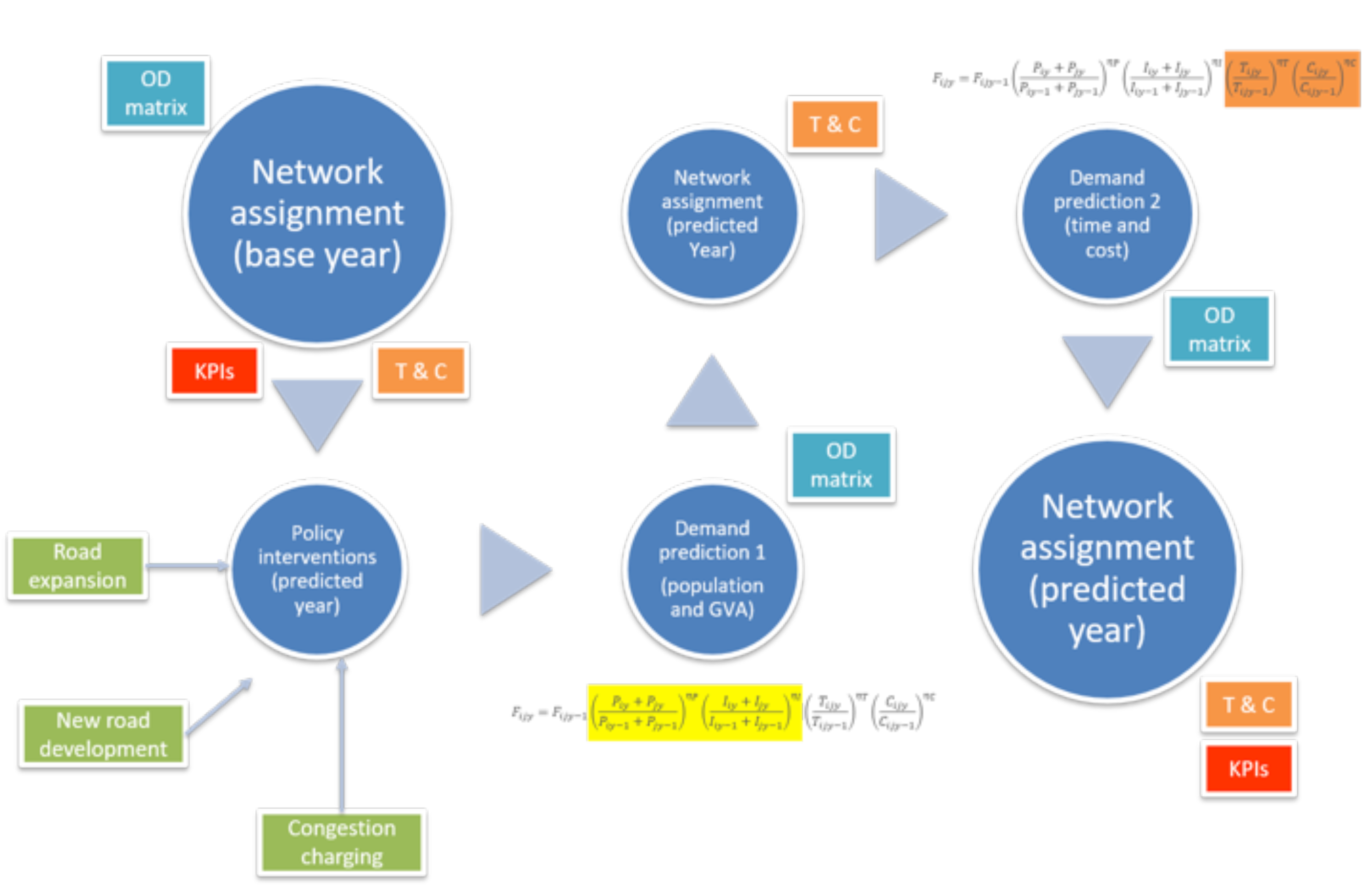Summary of capability
The NISMOD v2 Transport Model is a national-scale (Great Britain) transport model developed to support policy making regarding future infrastructure. It forecasts the impact of various endogenous and exogenous factors on transport demand and capacity utilisation, following an elasticity-based simulation methodology. The model is explicitly network-based, in order to obtain more accurate predictions of travel times, travel costs and capacity utilisation. The structure of the road model is shown in the diagram below.

Key features:
- Predicts passenger and freight vehicle demand and simulates traffic on major roads.
- Works on a simulation basis, predicting changes in flows from a base year OD matrix.
- Model forecasts take account of the effects of changes in both exogenous (e.g. population and income) and endogenous (e.g. travel time and travel cost) variables linked to travel.
- The model can include different future scenarios for vehicle fuel mix, fuel efficiency, transport pricing, infrastructure enhancements and policy decisions.
- The rail model provide station-based forecasts of future demand, and is linked to a sophisticated model for predicting base demand at new stations.
- Air and seaport models forecast future demand on a nodal basis and are coupled with models of land-based flows.
Data requirements:
- Base year datasets are integrated in the model.
- Forecasts of population, income and energy prices are required for future years.
- Scenario-specific inputs regarding endogenous features of transport systems.
Results:
Effective planning and investment for transport infrastructure systems is seen as key for economic development in both advanced and developing economies. However, planning for such strategic transport investments is fraught with difficulties, due to their high costs and public profile, long asset life, and uncertainty over future transport demand patterns and technologies. Given that only a finite quantity of funding is available for transport investment, it is important that this funding is spent in the right places and on the right projects (Blainey & Preston, 2019). The NISMOD transport model can inform transport infrastructure investment decisions by providing spatially detailed forecasts of future transport demand and capacity utilisation.